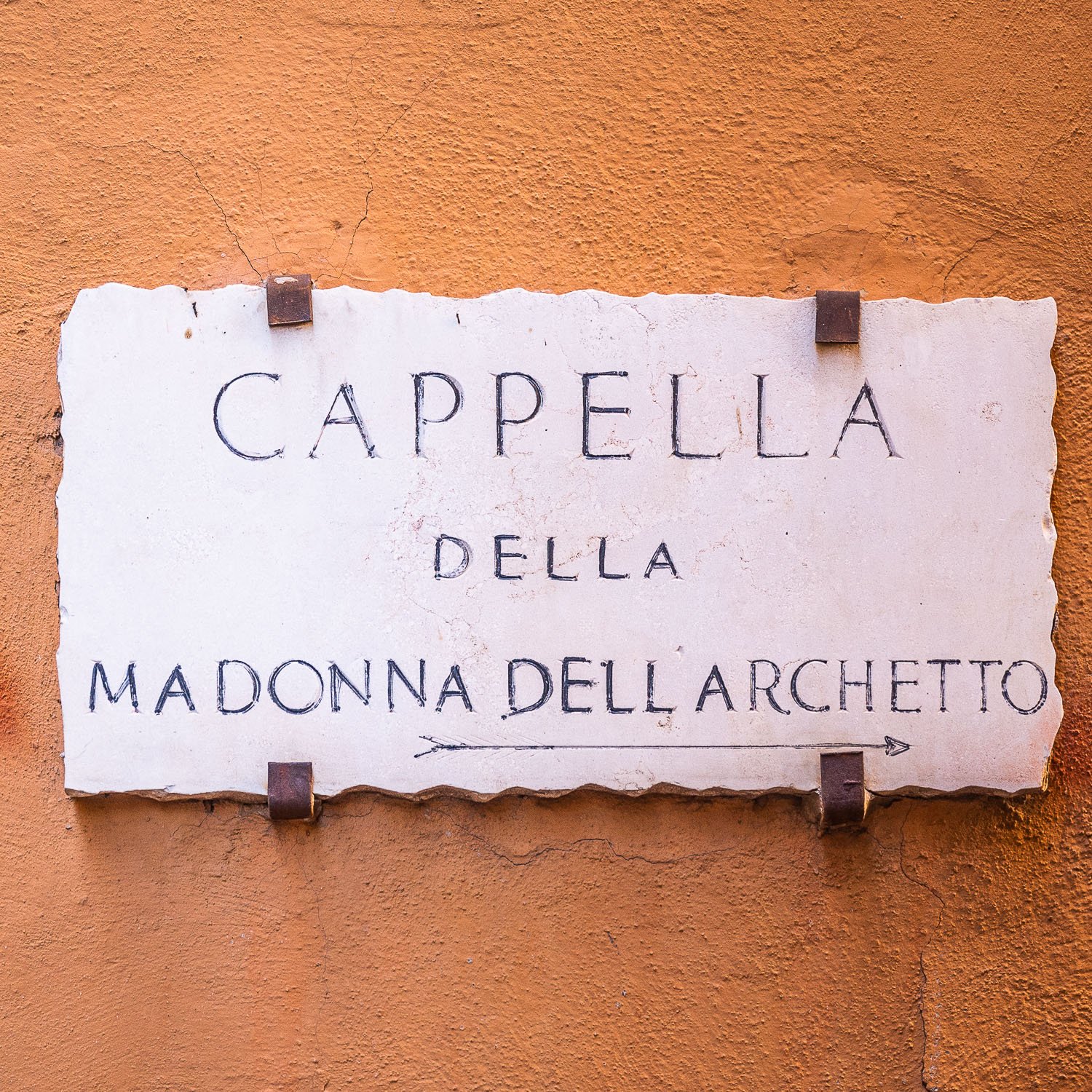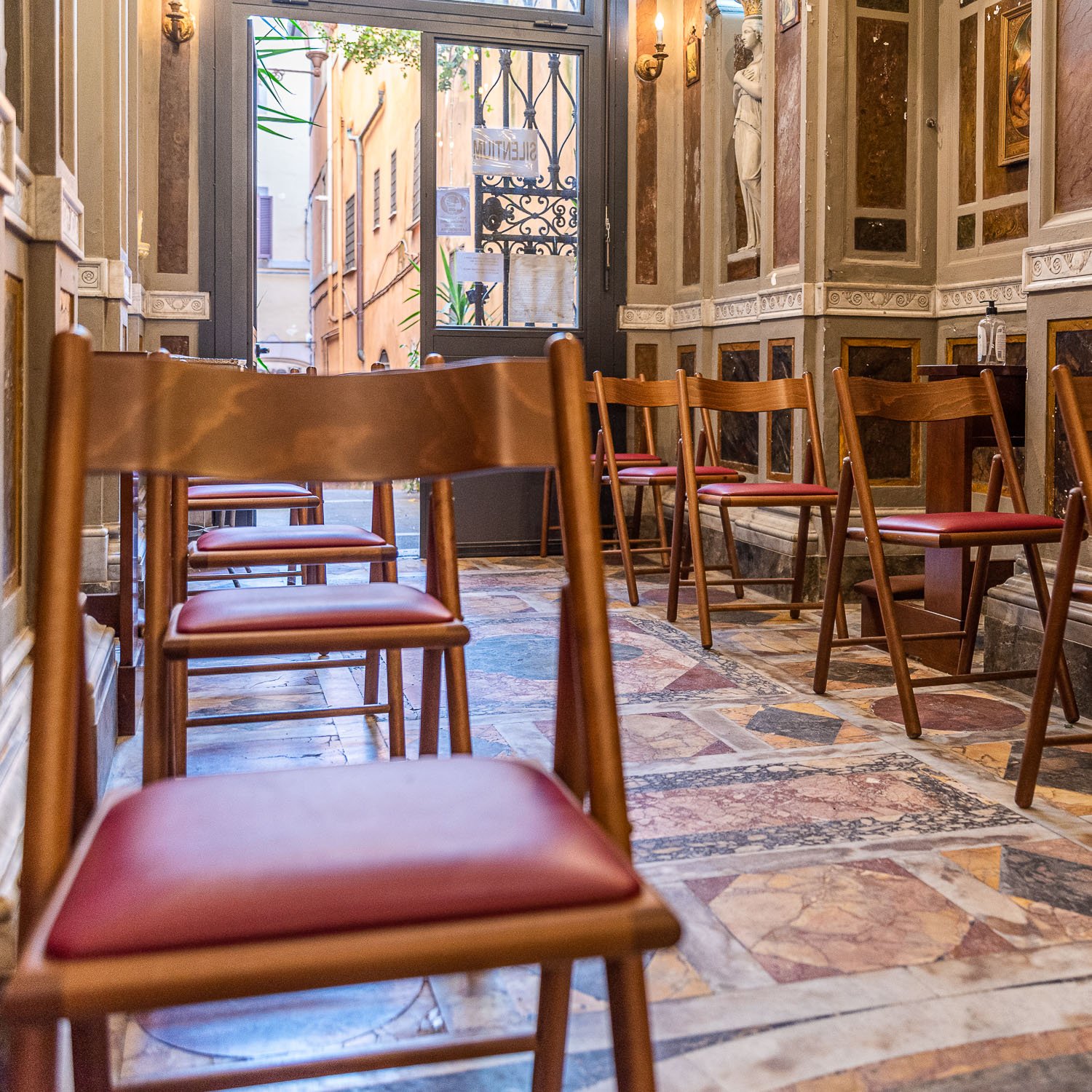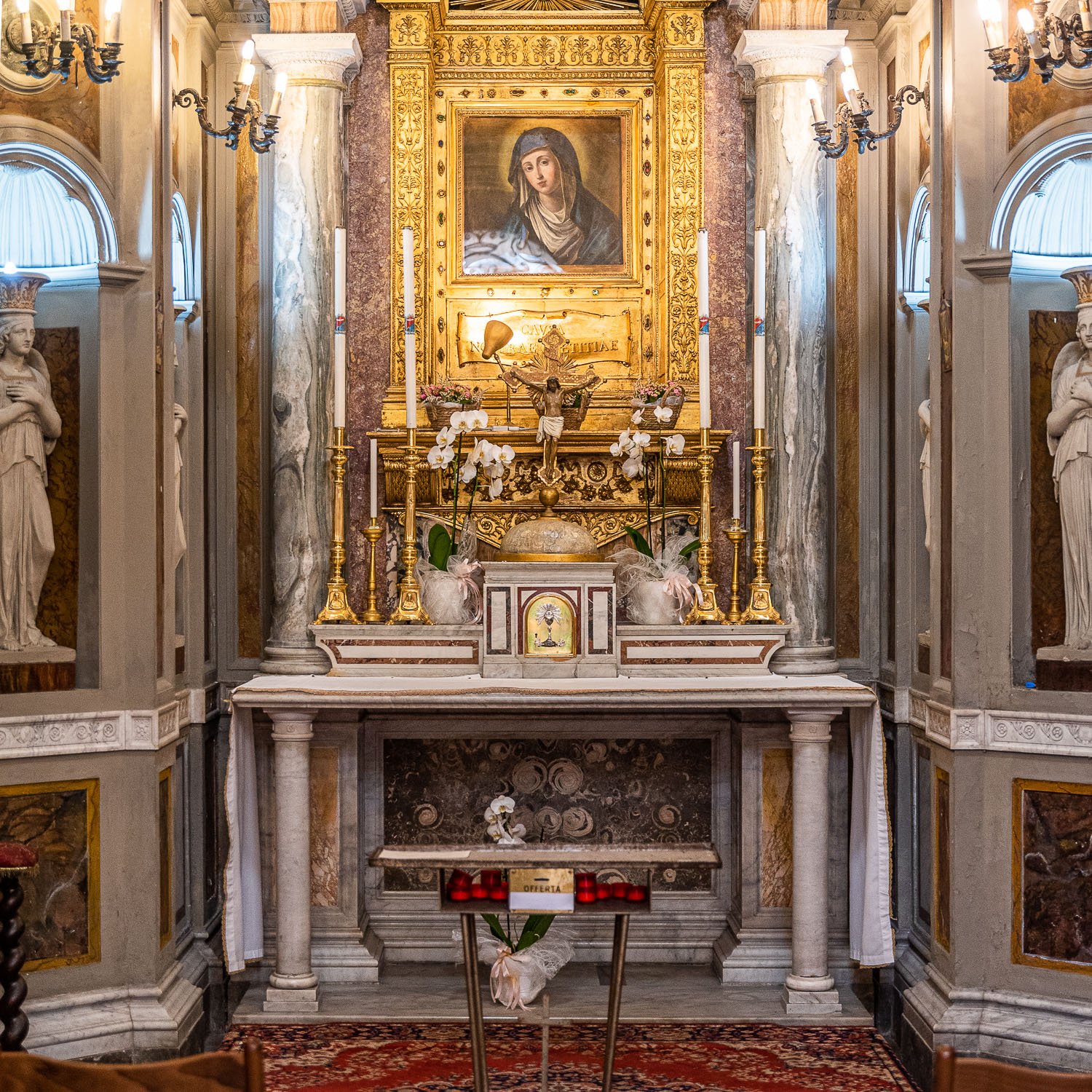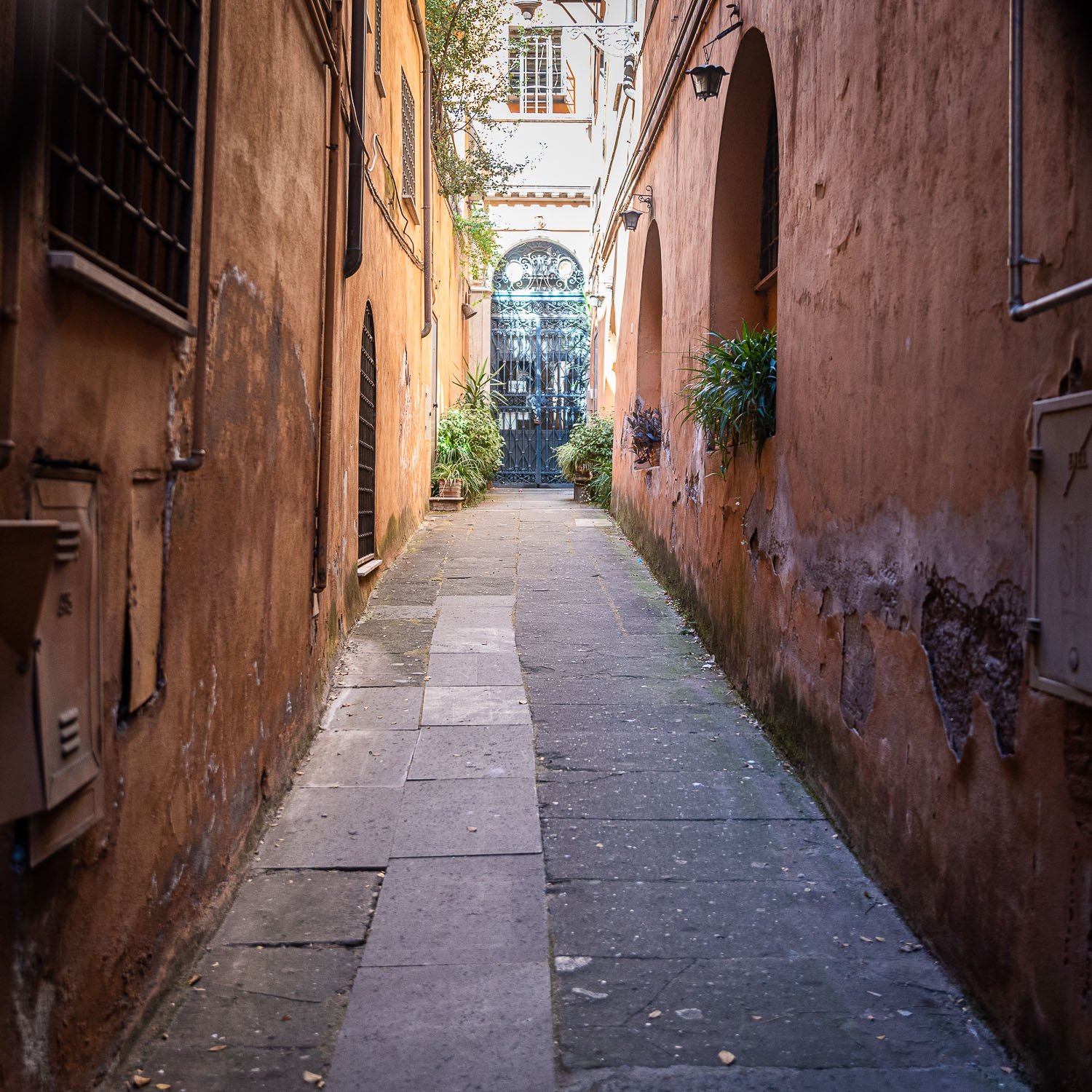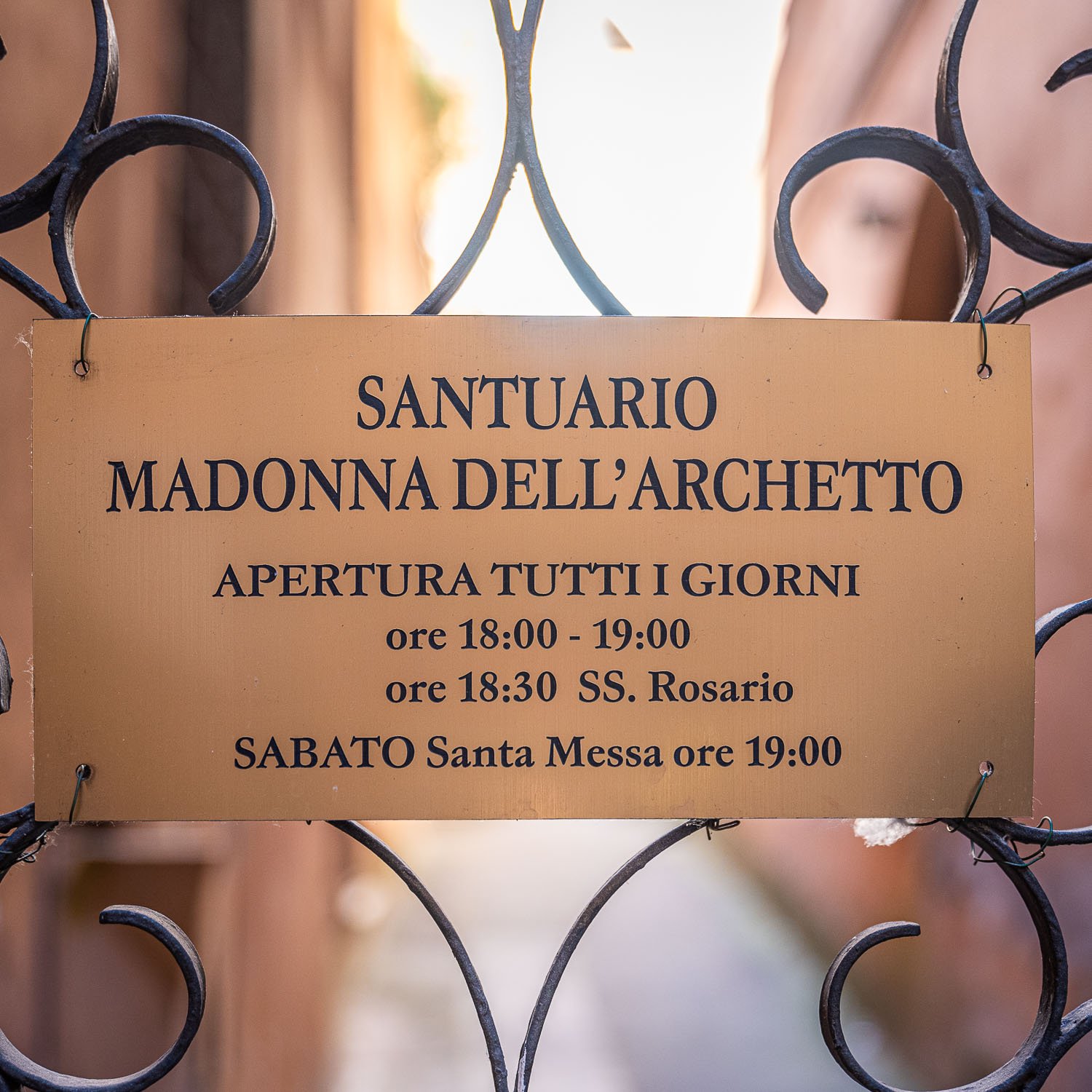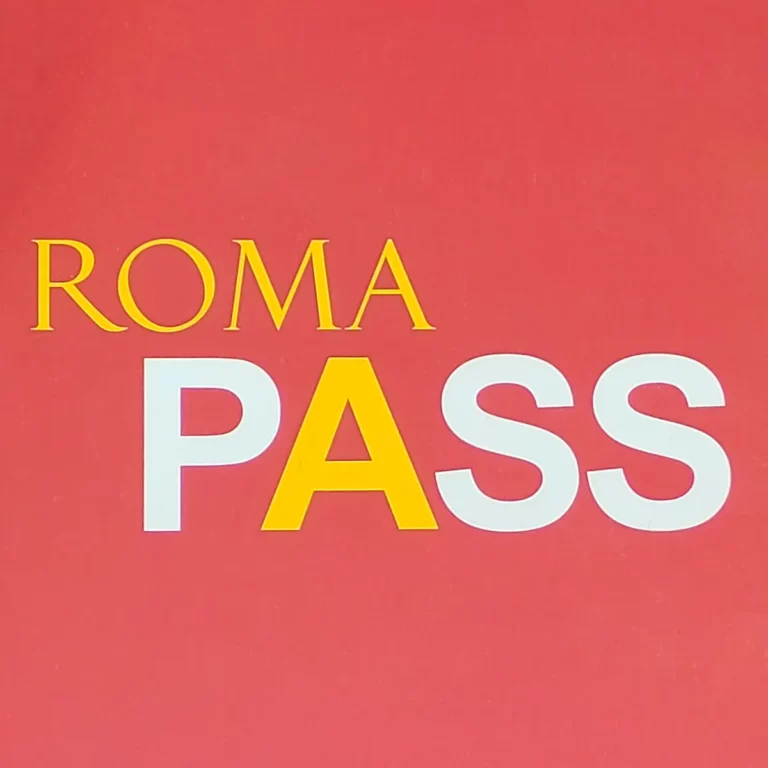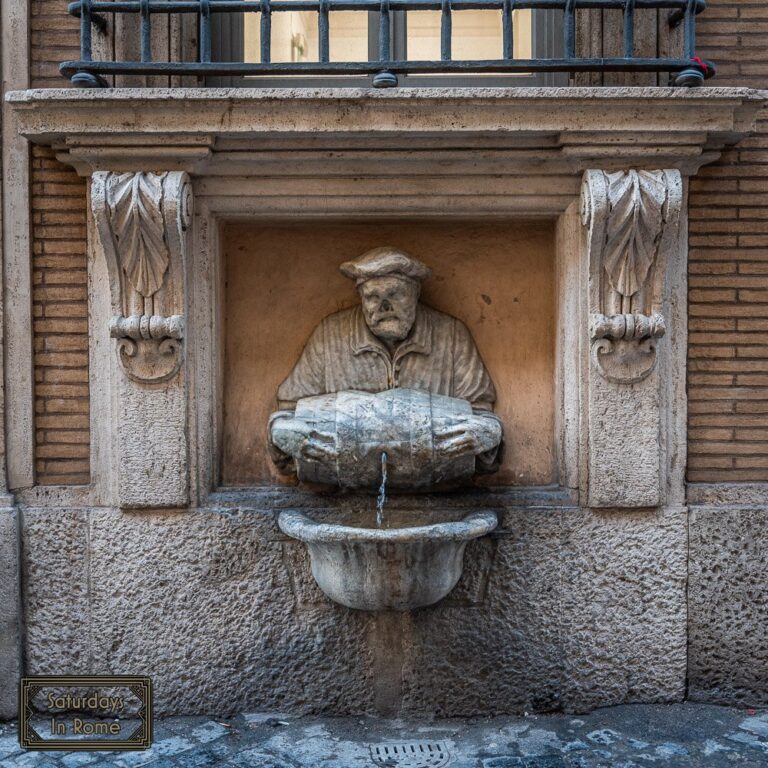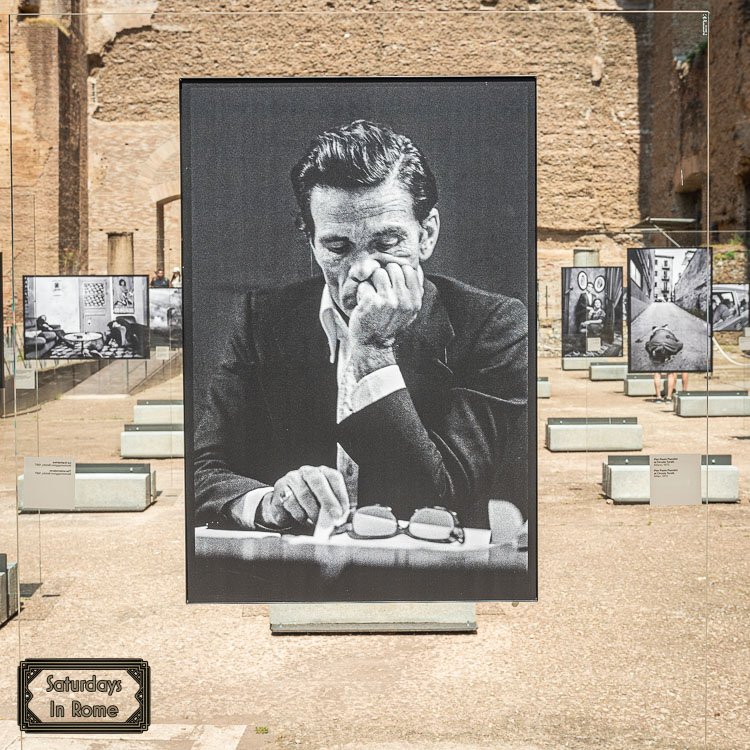The Beauty Of A Small Church In Rome Must Be Experienced
The Madonna dell’Archetto is a small church in Rome and was built in the 19th century and is an amazing contrast to the grand basilicas all around the city.
Wall Marker of The Chapel
Santa Maria Causa Nostrae Laetitiae
The small church is in the Trevi district and near Piazza Venezia (Via di San Marcello 41b). The official name of the church is “The Church of Santa Maria Causa Nostrae Laetitiae”. For those of us that don’t know Latin, Causa Nostrae Laetitiae means: “The Cause of our Joy”.
Need Help Planning?
- Cheap Flights: Find The Most Affordable Flights.
- Accommodations: From 1 to 5 Stars And More.
- Car Rentals: Affordable Travel Across Italy.
- Sightseeing Tours: Explore Some Amazing Tours.
- Buying An eSIM: Stay Connected In Italy.
This post includes affiliate links.
Palazzo Muti alla Madonna dell’Archetto
This tiny chapel was built in the 19th century to contain an ancient image of the Madonna, who was respected and admired, under a narrow passage arch at Palazzo Savorelli Muti Papazzurri. The building name was changed to “Palazzo Muti alla Madonna dell’Archetto” after the sacred image of the Madonna (Mary, not Ms. Ciccone) placed in a small niche in the alley at the back of the building in 1796 was said to have performed a miracle, moving its eyes repeatedly on July 9, 1796 as if to predict the invasion of France into Rome.
The extraordinary phenomenon was recognized by a papal decree of 1797. The Madonna, officially known as “Madonna dell’Archetto”, had been painted around 1690 by Domenico Muratori for the Marquise Muti Papazzurri who lived in the palace.
Only A Few Folding Chairs, No Pews
The Madonna soon became one of the most visited shrines in all of Rome, to the point that in 1850 Count Alessandro Savorelli Muti Papazzurri with his wife Caterina decided to summon the architect Virginio Vespignani to build the neoclassical church of the Madonna dell’Archetto. This chapel is a rare example of neo-Renaissance architecture, rich in marble and metal, and it contains paintings by Costantino Brumidi, the same one who later frescoed the dome of the Capitol in Washington.
The building was inaugurated and opened to the public on May 31, 1851. Currently the sanctuary is one of the smallest churches in Rome.
The Miracle Of The Small Beautiful Church
The Alter
On July 9, 1796 a miracle occurred when the Virgin moved her eyes and wept in fear of the French invasion of the Papal State, which then took place in 1798. In memory of the famous prodigy but also to place the icon in a more suitable place, a small temple was built by the architect Virginio Vespignani, and it was a beautiful example of neo-Renaissance art.
This solemn inauguration took place on May 31, 1851 (55 years after this miracle), as the plaque above the entrance describes. The sanctuary was declared a national art monument and is topped by a dome richly decorated with wood carvings, of limited size (which is an understatement) but with a grand appearance. The small nave is embellished with plaster statues by the sculptor Luigi Simonetti depicting angels in the form of sculpted female figures serving as architectural support in the place of a column.
Costantino Brumidi
Costantino Brumidi was born in Rome, Italy to a Greek father and an Italian mother on July 26, 1805 and died in Washington DC on February 19, 1880. He was of Italian descent, but later became a naturalized American citizen of Greek origins.
He became a famous painter for his fresco that adorns the interior of the dome of the Washington Capitol known as the “Apotheosis of George Washington”. It was created inside the rotunda on the ceiling of the dome overlooking the capitol. For the next 25 years he worked skillfully on the realization of this artistic vision, so much so that he earned the nickname “Michelangelo of the United States”.
However, the work at the time of Brumidi’s death was still unfinished, although he had already done most of the decoration of the rotunda and its fresco. He is believed to be one of the most important American artists of his time.
Getting To The Smallest Church In Rome
This Narrow Passages Lead You To The Church
As described above, the address is: Via di San Marcello 41b. You should definitely find it on a map because it is out of the way and difficult to find.
If you are standing in Piazza Venezia and pointing north towards Via del Corso, walk towards the cross street of Via Cesare Battisti and turn right. Using the zebra stripes, carefully cross this busy street towards the north side. Turn right towards Piazza dei Santi Apostoli and turn left into the Piazza. Continue heading north towards Piazza Balestra and you will see the road narrow and become Via di S. Marcello. Follow this small alley and you will find the chapel on your right. If you reach Piazza dell’Oratorio, you have gone too far.
When Is The Smallest Church Open?
These Hours of Operation Are An Estimate.
I was surprised during my first attempt to visit the church that it is open to the public during only very limited hours. The sign indicates that it should be open everyday from 6:00pm until 7:00pm, but I found this to be only aspirational. I waited more than 15 minutes and I was preparing to leave when someone came to open the church. This might be one of those times to relax and show up 20 minutes late.
Other Interesting Churches In Rome, Italy
This small church is definitely not at the top of the “Must-See” list, but if you are in the neighborhood and want to see something at a scale a little different than Saint Peter’s Basilica, check it out and make sure you tell everyone how you saw the smallest church in Rome! Here are some other interesting churches you should checkout:
- Exploring The Great Churches of Rome On Altar At A Time.
- These Are The Best Churches In Rome You Must See!
- Santa Maria Sopra Minerva Is A Popular Church Not To Miss.
- Inside The Pantheon: What You Will See When You Visit.
- The Church Of Santa Maria Della Scala In Trastevere Awaits.
- 9 Amazing Religious Sites In Rome For Everyone To See.
- The Oldest Church In Rome Is Hidden Among The Better Known.
- San Saba, Rome Is A Jesuit Basilica You Need To Explore.
- The Church of Santa Maria della Vittoria In Rome, Italy.
- The Nativity Scene At The Vatican Is An Inspiring Site.
- Scala Sancta Is A Unique Experience For The Faithful.
- The Santo Stefano Rotondo Church In Rome Must Be Seen.
- San Clemente In Rome Is A Basilica With Layers Of History.

